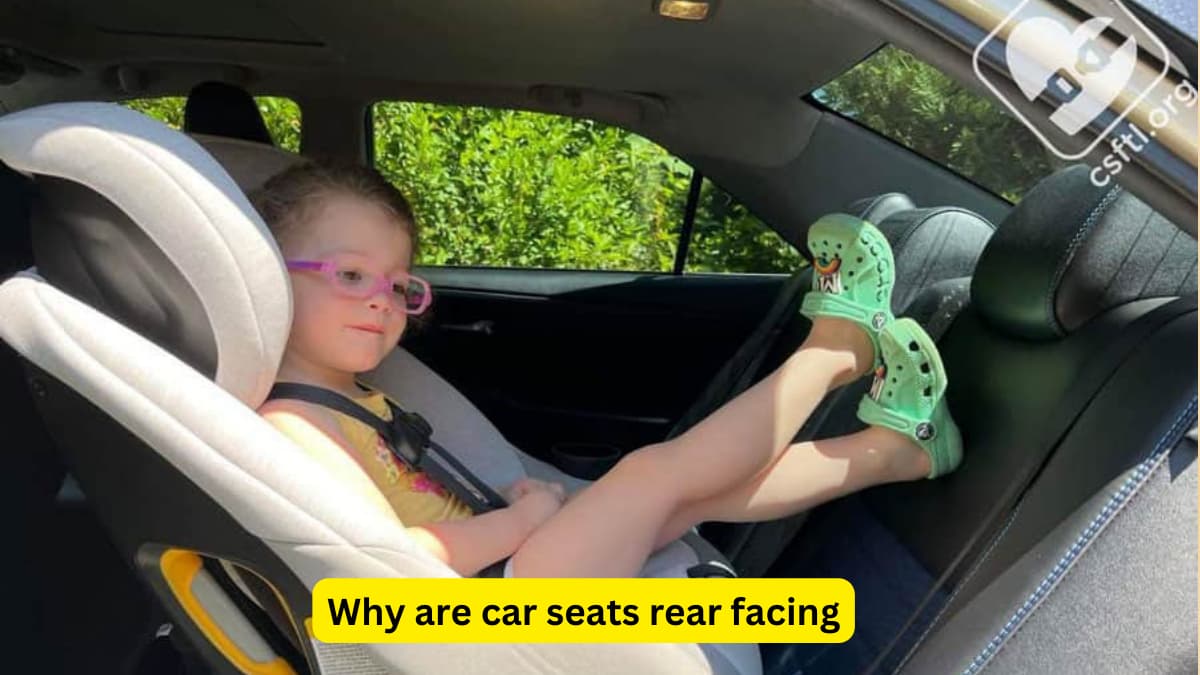Why Are Car Seats Rear Facing? – Explained
Car seats start out rear facing because that’s the safest way for infants and babies to ride.
I’ve been there three times already contemplating to switch to forward facing mode and each and every time I’ve decided to wait it out.
Why are car seats rear facing?
From all the scientific data we can conclude that rear facing is by far the safes way for kids to travel. No wonder that car seat companies are offering extended rear facing up to 50 pounds or around 5–6 year old.
Here are the top reasons which will convince you to keep your little one (or not so little one) rear facing as long as possible.
5 Reasons to Keep Your Child Rear-Facing for as Long as Possible
- Rear-facing car seats are safer for young children because they distribute the force of a crash over a greater surface area.
- Rear-facing car seats are more comfortable for young children because it supports their head and neck better than a forward-facing seat.
- Rear-facing car seats are easier to install correctly
- Rear-facing car seats are less likely to cause whiplash injuries than forward-facing car seats.
- If you keep the child in the rear facing seat, their body is less likely to hit hard objects like metal or plastic if there is a crash.
Why You Want a Rear-Facing Car Seat
A rear-facing car seat is the safest option for a child’s first four years of life. The evidence is clear, and why to use a rear facing car car seat will be explained here with reasons why most medical experts strongly advise this practice. When a child is seated in a rear-facing car seat, they are riding in a more reclined position. In a car accident, this means the child’s head will be better supported and less likely to move around or get injured.
In contrast, forward-facing car seats support a child in a more upright position. This makes it easier for their head and neck to move and possibly hit the back of the seat causing injuries such as concussions or worse.
Furthermore, rear-facing car seats protect the child’s head, neck and spine in the event of an accident by supporting it better than forward-facing seats.
A rear-facing car seat is also safer because the force is distributed across the child’s lower body in a crash.
Toddlers Need Rear-Facing Car Seats Due to Their Bones
At around the age of two, children’s bones become stronger and stable enough for them to ride in a forward-facing car seat. This is why child safety advocates recommend that parents wait until their child reaches the age of two before turning their rear-facing car seat forward facing.
However, in the event of an accident, children who are younger than this age may be hurt even worse because their bones are still soft and flexible.
Similarly, it is why four years old is the ideal minimum for keeping a child rear-facing in a car seat.
See also: Safest car seat for 4 year old
How Long Should My Kid Ride in a Rear-Facing Car Seat?
During the first two years of their life, experts recommend keeping a child rear-facing, even if they are approaching 40 pounds. Even at this weight limit, many children are still not tall enough to be safe in a forward-facing car seat.
After age two, experts recommend continuing to use a rear facing car seat until your child outgrows it. This means that you should check your car seat’s owner’s manual for its height and weight requirements.
If a rear-facing car seat is outgrown before age four, experts recommend turning the seat forward facing for between one week to a month. After this short transitional period, experts recommend returning to using a rear-facing car seat.
If you find that your child outgrew their rear-facing car seat around age two, why to use a rear-facing car seat will be explained here with reasons why most medical experts strongly advise this practice.
Conclusions
Rear-facing car seats are safer for young children because they distribute the force of a crash over a greater surface area, are more comfortable, and are easier to install correctly. Keep your child in a rear-facing car seat until they outgrow it to ensure their safety during accidents.
If you have questions please feel free to contact me.
Frequently Asked Questions:
When can a baby sit front facing in a car seat?
This is highly dependent on the car seat. Typically convertible ones allow forward facing earlier. Still, it’s a good idea to keep your child rear facing until 4 years old.
Why are rear facing car seats safer for babies?
The body of a child differs structurally from the body of an adult in a number of ways. On average, children are lighter and less developed, but the bones in their neck are more flexible. The head of an infant can flop forward or to one side, causing injury to the spinal cord. In a rear-facing car seat, the baby is reclined at about 30 degrees. This helps support the neck and decreases rotation within the seat. A forward-facing seat (toddler) ensures the child’s head is in close proximity to the back of the seat which can dramatically increase rotational forces on the neck and spine during an accident.
Are rear facing car seats safer?
Yes, they are, according to the American Academy of Paediatrics (AAP). Rear-facing car seats protect infants and toddlers, who are still developing, by distributing crash forces across areas of a child’s body that have greater “bone density and more complete formation,” and also because injury to internal organs is less likely than when traveling forward facing.
Do babies legally have to be rear facing?
This depends state by state. Many have a minimum requirement of 1 year and in other states, this minimum is 15 months.
Last Updated on October 18, 2023 by Brian Beasley

